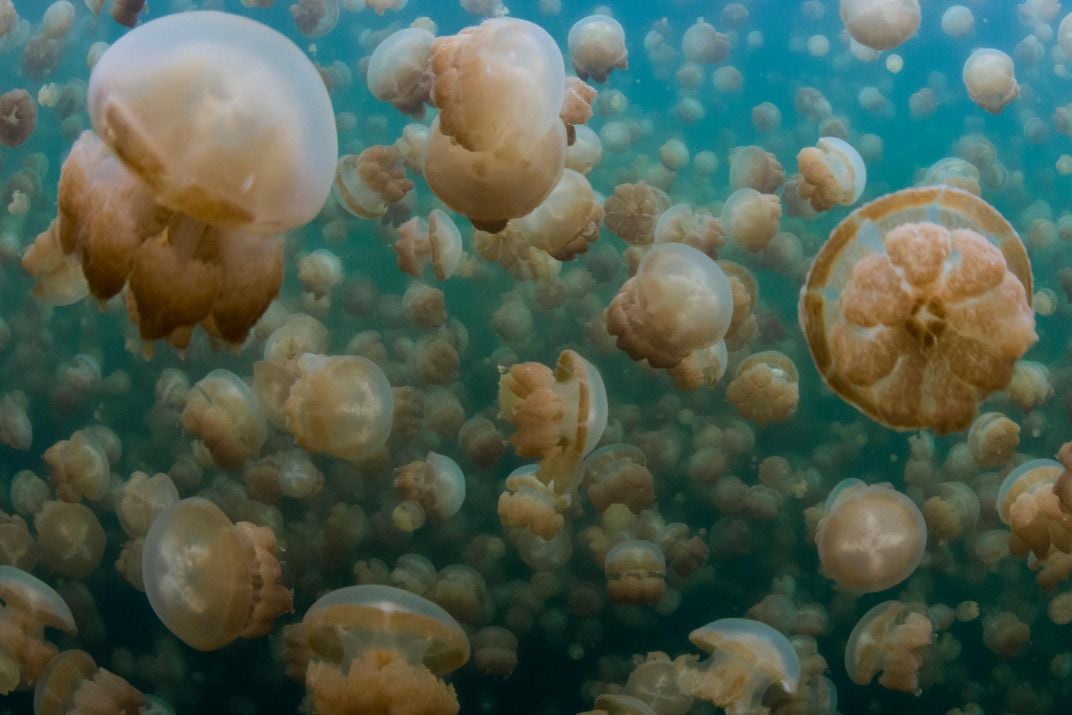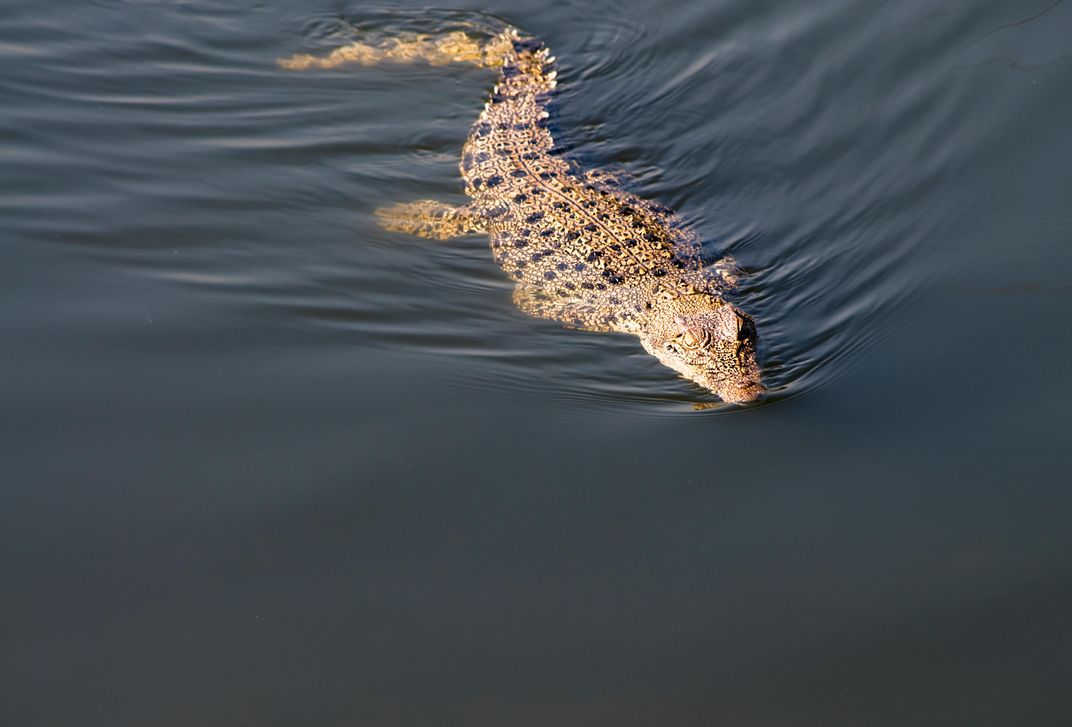From Jellyfish to Crocodiles: Where to See Unusual Migrations
Butterflies and wildebeests aren’t the only species you can find migrating en masse
/https://tf-cmsv2-smithsonianmag-media.s3.amazonaws.com/filer/f7/ca/f7ca6a57-109c-472f-a422-2a6a9da5e28e/rhinoptera_steindachneri.jpg)
The great migrations we all know about—those of wildebeests, monarch butterflies and more—are, by any measure, amazing, stunning and massive—worthy of any nature traveler's bucket list. But the world is rife with lesser known, but equally impressive migrating creatures that year after year brave thousands of miles of open ocean, cross deserts and take to the skies en masse. These animals move for a multitude of reasons—whether it’s to reach a better climate, find food, breed or avoid predators. And as technology improves, scientists are learning more about which species are migrating and why, as well as what happens along the way.
“We are at a time of great, new and rapid understandings about migrations,” Royal Society for the Protection of Birds senior scientist John Mallord told The Guardian. “Technology is driving a revolution. With birds, it is showing us a far fuller picture of where they go and where they stop. We see now that birds may spend different lengths of time in different places. Some months are spent moving, some feeding up. In the past we had only pinpoints provided by ringing. We had no idea what happened along the route.”
Here are a few of the top contenders for most unusual migrations—and where to see them.
Dragonflies
They aren't the only bugs that migrate, but dragonflies travel further than any other insect on the planet, twice as far as monarch butterflies. Millions of them gather at once to fly from southern India to Africa—a round-trip distance of about 11,000 miles. But though that’s the longest route, dragonflies follow other migratory paths as well all across the world. In the late summer and early fall, an equally large number of the insects fly down from Canada, through the U.S. and Mexico, and into the West Indies.
In 2006, Scientists made an effort to track the bugs with mini radio transmitters and discovered something surprising: they primarily travel at night, following patterns and making decisions normally seen in songbird migrations.
Cownose Rays
During the Cownose Ray annual migration, the water surface in the Gulf of Mexico looks like a slick carpet of varying shades of brown. The dark-colored rays like to swim near the surface, creating a massive spectacle when groups (or 'fevers') of up to 10,000 of them head north in the spring and south in the autumn. Their migration is food-based, and they move clockwise from Florida to the Yucatan.
Although you can easily witness the spectacle by boat, be careful. The rays are poisonous with a stinger that’s about 15 inches long and sharp as a razor. They are known to be quite docile though, even more so when in large groups. Don’t threaten or startle them, and you should be fine.
Crabs
If you happen to be on Australia’s Christmas Island in the rainy season, during the high tide of the moon’s last quarter, prepare to be swarmed with crabs. About 40 to 50 million of the bright red crustaceans head into the island’s streets, leaving their home in the jungle behind on a quest to breed and release eggs into the sea. The migration can last more than two weeks and is so vast that the residents shut down roads and build bridges and tunnels for the crabs to traverse.
Aside from the red crabs on Christmas Island, black land crabs follow migratory patterns, too. In Colombia, it’s for the same reason—mating and breeding. Then the juvenile crabs have their own migration inland from the shore.
Golden Jellyfish

In a saltwater lake aptly called Jellyfish Lake in Palau, millions of golden jellyfish crowd the western side of the lake every morning. As the sun moves, so too do the jellyfish, following the solar path until they hit the shadows on the eastern edge of the lake by midday—then they begin a trek back to the other side, again following the light from the setting sun. Overnight, the jellyfish swim up and down in a nutrient-rich layer of water.
It’s not just a desire to be in the sun that has the jellies following a perpetual course around the lake. They actually need the light to survive—sunlight nourishes some algal organisms that live inside the jellyfish in a symbiotic relationship, providing their hosts with energy. Plus, anemones, the primary predator to golden jellyfish, live in the shadows in the lake, so following the sun helps keep them out of harm's way. The movement is also good for the lake, which is isolated with no outlet to the sea; when the jellyfish move, they mix the water.
Army Ants
Army ants are constantly on the move, generally looking for more food sources to feed their massive colonies. There are about 250 species of army ant, with colonies growing up to about 20 million ants—thanks to the queen, who spends her life laying an egg every two seconds. The carnivorous ants have been known to carry off small animals, even goats, and occasionally larger creatures depending on the size of the colony.
Once all the food in an area is depleted, the ants pack up and move to a new site where they build an entirely new nest. But it’s no typical anthill—the nests are made out of the ants themselves. In Panama, the ants relocate every night. Other places to (carefully) observe these ants on the move: Central and South American jungles, as well as Africa. You’ll have to be a bit nocturnal to see them, though; the ants travel by night, forming bridges out of their bodies to manage any gaps in the landscape.
Saltwater Crocodiles

Peppered throughout Australia, Asia, India and the South Pacific, saltwater crocodiles move from coast to coast, island to island, in a hunt for food. They can grow up to 23 feet long and exceed 2,200 pounds—not to mention that every bite carries about two tons of pressure. But even though they’ve managed to span such a large area and make it far out to sea, the crocs are poor swimmers.
Scientists in Australia wanted to know how exactly the crocodiles managed to get so far out, so they followed the creatures with sonar transmitters and satellite tracking. The researchers uncovered that the crocs basically surf across the ocean to reach far-out distances. Essentially, it is believed that they time long-distance travel with the tides and current, so when they set out on their journey, they can just let the water carry them across hundreds of miles. One tracked crocodile traveled 366 miles in just 25 days.
/https://tf-cmsv2-smithsonianmag-media.s3.amazonaws.com/accounts/headshot/JenniferBillock.png)


/https://tf-cmsv2-smithsonianmag-media.s3.amazonaws.com/accounts/headshot/JenniferBillock.png)